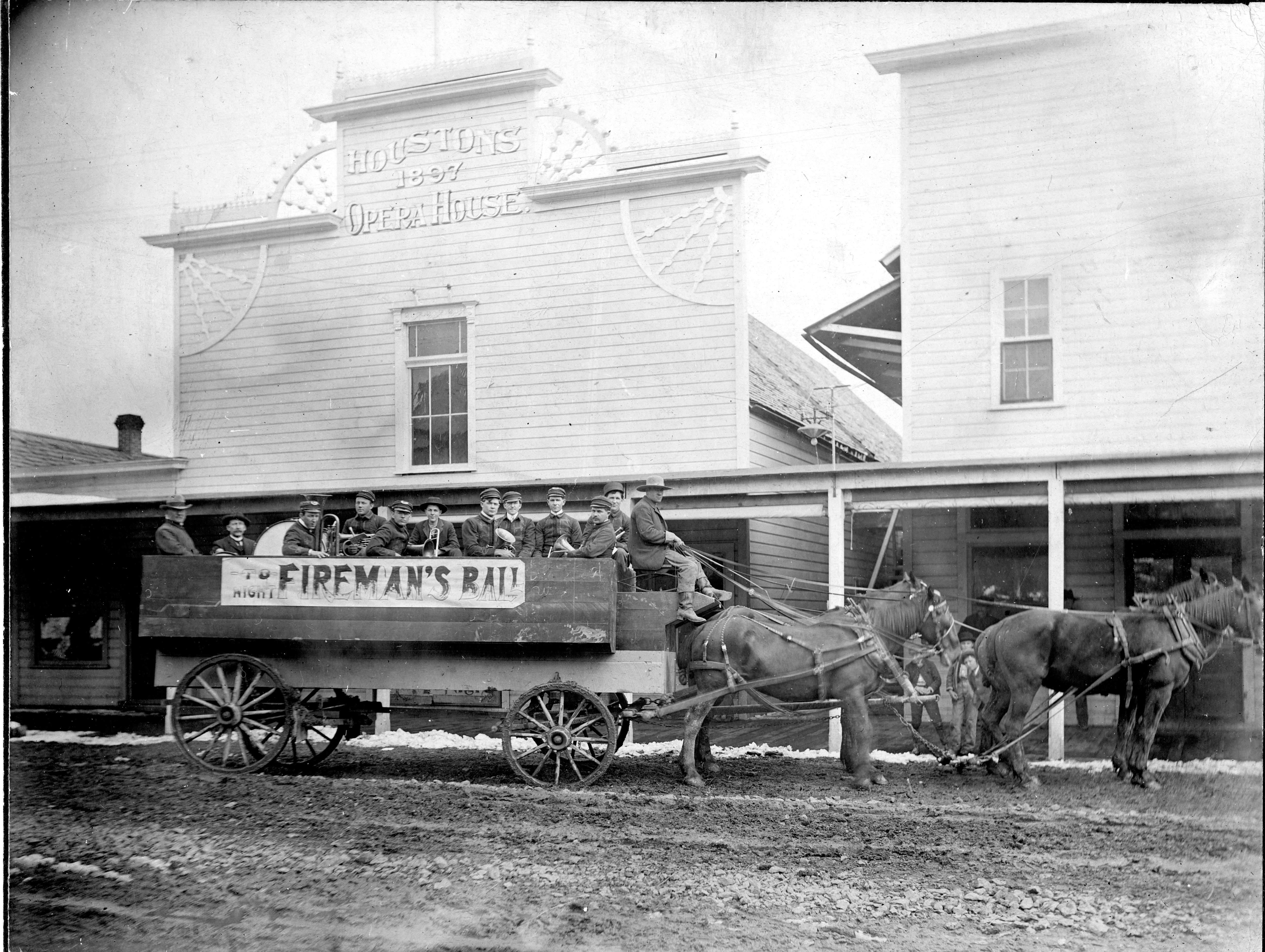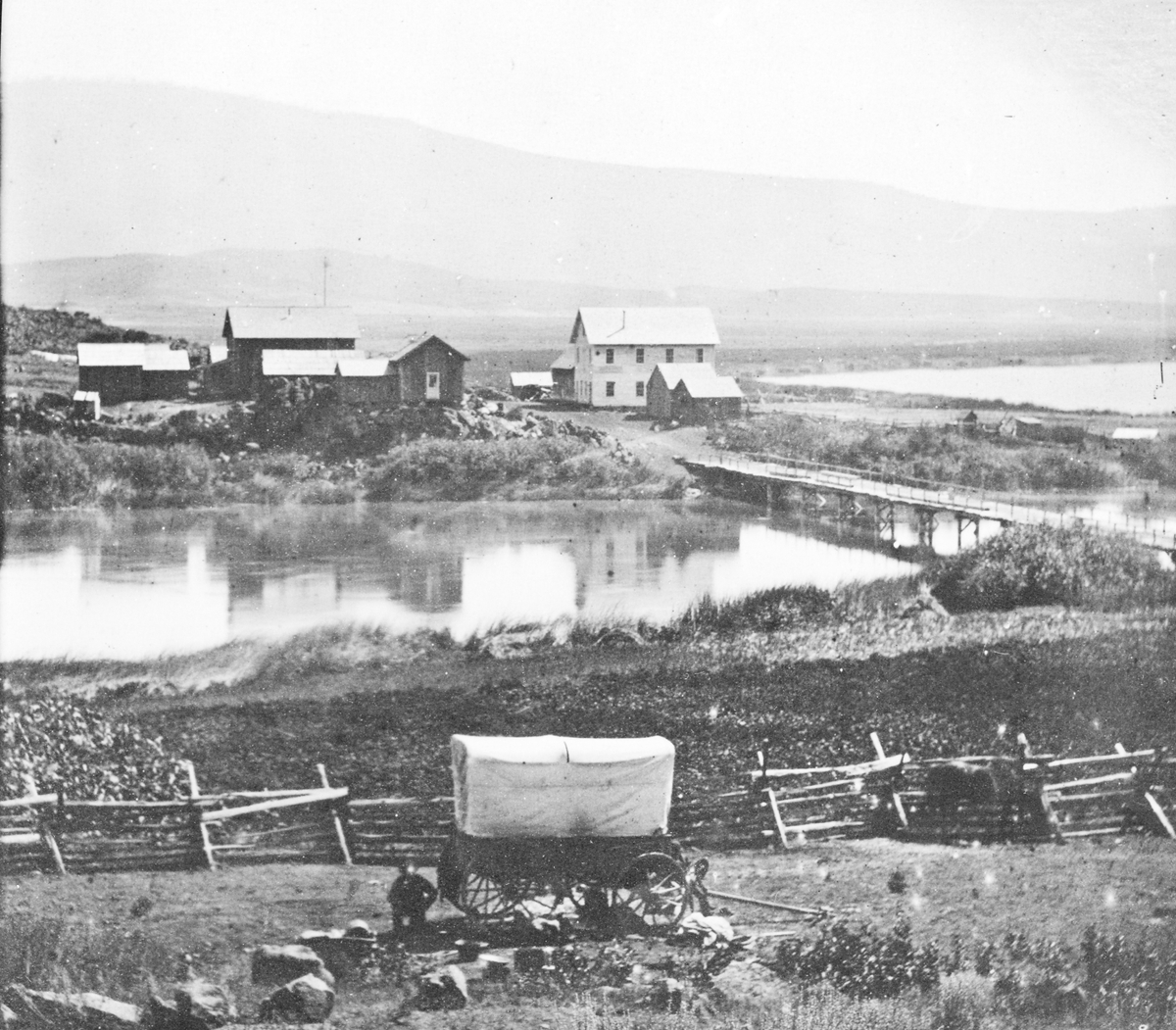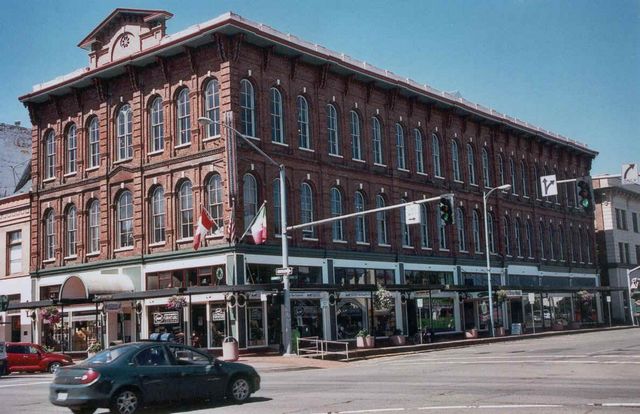The story of the Houston Opera House begins with the arrival of John V. Houston and his family from Colorado in 1894 and ends twenty-six years later with a tragic fire. When Houston stepped from his stagecoach in Klamath Falls that year, many vestiges of the Wild West remained, including cattle drives through town and cowboys and lumberjacks whooping it up on weekends. A former newspaper publisher, Houston pictured a different form of public entertainment.
In 1897, Houston purchased a vacant two-story building on Main Street near Second Avenue. He added a brightly painted wooden façade and a large stage inside. He and his brother, J.A. Houston, named it the Houston Opera House to honor their father, who had loaned them the funds to get started.
The opera house quickly became the city’s cultural center, with community dances, costumed balls, club meetings, concerts, basketball games, and even church services on Sundays. Those who appeared on stage included silent movie star Mary Pickford, world-renown Danish violinist Skovgaard, and scores of stars with the national Sullivan and Considine Circuit.
When John Houston convinced West Coast vaudeville companies to add Klamath Falls to their itineraries, the city responded by attracting as many as 700 people to watch melodramas, hypnotists, spiritualists, and minstrel shows. If a good boxing match was available, Houston set up a roped ring and surrounded it with tables and spittoons. For family fare, he brought in Chautauqua lecturers and traveling circuses.
Houston—who became the best-known person in the county—dazzled audiences with the city’s first Vitagraph machine. In 1901, he added the Edison Projectroscope, showing scenes from the Spanish and Boer wars and Teddy Roosevelt's Rough Riders in Cuba. For silent films, he formed the Houston Orchestra made up of family members and ran the projector himself. He branched out and by 1912 owned and operated the Temple and Star theaters. That year, he was elected to the city council.
In 1913, when religious leaders threatened to boycott the state’s theaters and opera houses unless they closed on Sundays, Houston helped form the Oregon branch of the National Motion Picture Exhibitors League. He and others hammered out a compromise that called for promoting family films in exchange for opening on Sunday afternoons. During World War I, the opera house became the center for war bond drives and an assembly point for draftees.
The Spanish influenza swept through Klamath Falls in 1918, sickening hundreds and killing at least forty-three people, according to published news accounts. Health officials closed all public meeting places, including the opera house. The epidemic subsided by year’s end, but customers stayed away in droves, nearly crippling Houston financially.
Emotionally exhausted, he sold the opera house in March 1920. On Labor Day of that year, an intense fire erupted behind the Houston Hotel and within two hours had leaped across the street, destroying the opera house and several small businesses and rooming houses. Thirteen people died and over a dozen were injured, with damages estimated at $100,000.
Although no criminal charges were filed, investigators accused nearby business owners of carelessness, for ignoring debris and gasoline containers pushed up against their buildings. For the estimated thousand people who attended a memorial service for the victims, it mattered little that Houston had introduced Klamath Falls to national touring companies, hundreds of celebrities, and the county’s first motion pictures. Many blamed him, neighboring business owners, and a lackadaisical city council for the catastrophe.
Houston never recovered from his loss and retired from the limelight. He died in 1935 in Klamath Falls and is buried in the Linkville Pioneer Cemetery with his wife, Mae, and son, Merle. No effort was made to rebuild the opera house. Today, only a few museum photos remain of his legacy and the building that once helped define the community’s cultural life.
-
![Bally Ho Band during annual Firemen's Ball at the Houston Opera House, about 1900.]()
Houston Opera House, ca 1900.
Bally Ho Band during annual Firemen's Ball at the Houston Opera House, about 1900. Photo Fred Houston, courtesy Klamath County Museum
Related Entries
-
![Elgin Opera House]()
Elgin Opera House
The Elgin Opera House, pride of the town of Elgin, Oregon (pop. 1,685),…
-
![Linkville and the Moore Family]()
Linkville and the Moore Family
The outpost of Linkville (present-day Klamath Falls) was established by…
-
![Reed Opera House]()
Reed Opera House
The Reed Opera House is one of Salem's few remaining large structures f…
Map This on the Oregon History WayFinder
The Oregon History Wayfinder is an interactive map that identifies significant places, people, and events in Oregon history.
Further Reading
Burk, C. William. The Houston Opera House. Klamath Falls, Ore.: Klamath County Museum, 1972.
Teater, R.E. Klamath Echoes #5. Klamath Falls, Ore.: Klamath County Museum, 1967.




